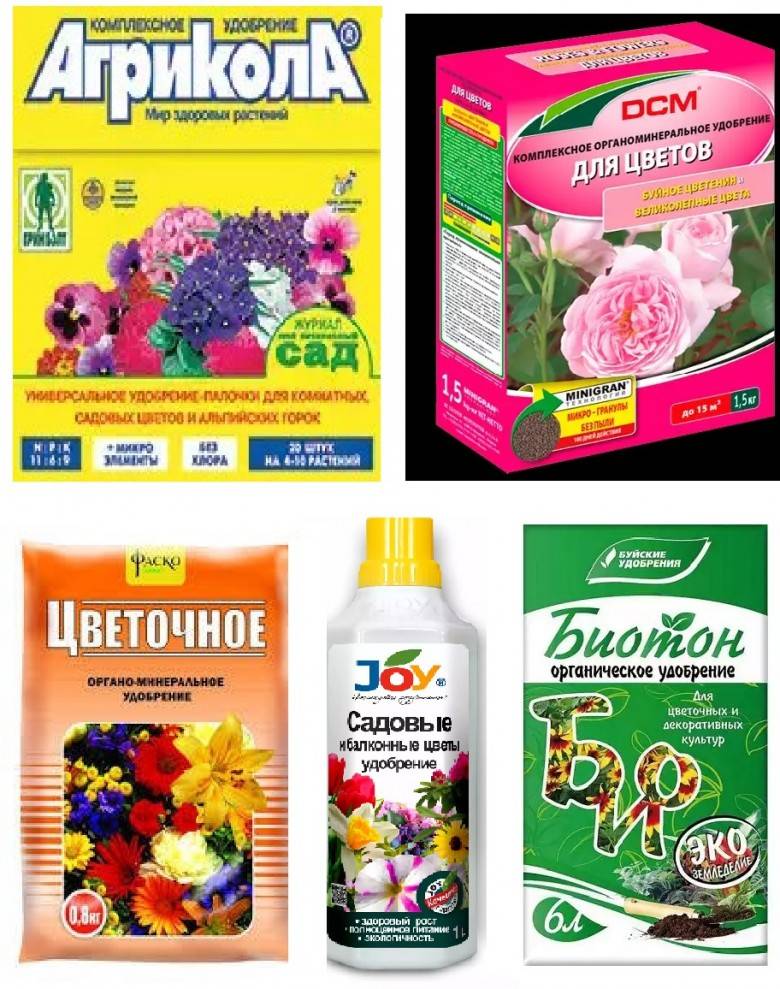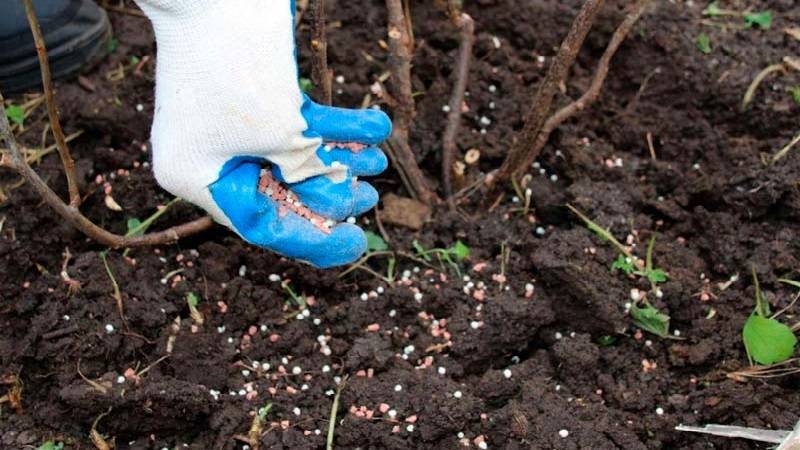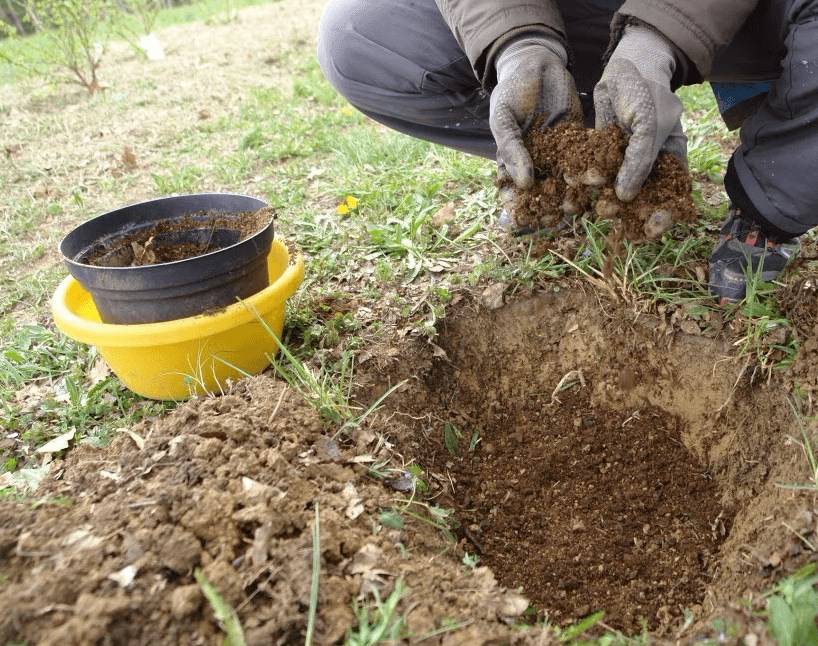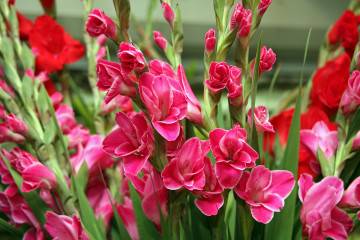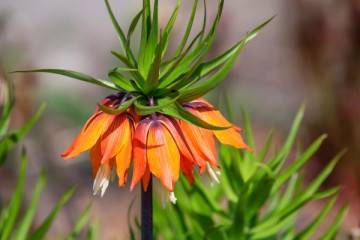How to feed gooseberries in spring, summer and autumn
Content:
Today, gooseberries grow on almost every household plot, and a few centuries ago it could only be found in the wild in Western Europe and North Africa. It is a low-growing shrub that is unpretentious to its habitat and feels equally comfortable both among cultivated plants and in forests. If you do not follow agrotechnical rules and do not take proper care of the bush, it will run wild, and the fruits will become not only small, but also unbearably sour.
Brief description of gooseberry
Plant height ranges from 1-1.5 m. The bark exfoliates, its color ranges from dark brown to dark gray. The branches are abundantly covered with thorns. The leaf plates have a rounded or oval-ovoid shape, the surface is pubescent. Buds are brown in color.
During flowering, light green miniature flowers with a red tint are formed. As a rule, the bush blooms in the middle or towards the end of May. The fruits ripen and are suitable for consumption at the end of June - mid-July, some varieties ripen only at the end of summer.
For long-term and abundant fruiting, the plants need to be fed regularly. Nutrients help bushes recover faster after wintering. The introduction of organic and mineral fertilizers improves the taste of berries and accelerates the growth and development of cuttings.
Some of the substances contained in fertilizers help the bushes to cope with fungal diseases and prevent insect attacks.
The optimal frequency of fertilization is 3 times during one growing season. For the first time in early spring, then in summer and last time in autumn in preparation for wintering. Fertilize for the first time even before bud formation.
It is also important to know that uncontrolled fertilization will not allow the bush to prepare for wintering.
What fertilizers are suitable for gooseberries
Before figuring out how to feed gooseberries, you need to familiarize yourself with the main types of fertilizers. If, for example, all the foliage falls off, the fruits wither and the bush dries up, you can use both mineral and organic fertilizers. In some cases, complex fertilizers or folk remedies proven over the years are advisable.
Mineral
Mineral fertilizers for gooseberries, when used correctly, have a beneficial effect on the development and fruiting of the bush. The culture is especially in need of potassium and phosphorus. Under the bush, according to the schedule, the following compositions are introduced:
- diammophos is used for super acidic and simply acidic soils, compatible with organic fertilizers, but only with preliminary preparation and appropriate infusion;
- superphosphates are preliminarily diluted with water and used to stimulate plant growth and development. It is enough just to water the bushes with it.
To increase yield indicators, it is recommended to apply the following substances under the bushes:
- wood ash;
- potassium in the form of sulfate;
- potash;
- two-component potassium nitrate.
Organic
Perhaps the most effective growth stimulant is humus, which is additionally mixed with wood ash and bone meal to enhance the effect. If the main component is not available, the compost obtained from the processing of hawthorn, rowan berries, creeping thyme and feather grass is used as an alternative.
Complex
The use of complex formulations allows you to achieve the most effective results and at the same time reduce costs. The most in demand are:
- nitrophoska (the composition contains equal amounts of potassium, phosphorus and nitrogen);
- ammophos (contains phosphoric acid, which has been neutralized with ammonia).
It is recommended to introduce these formulations in spring and autumn.
Folk remedies
Gooseberries are also often fed with compositions prepared according to folk recipes. The most common and demanded among them:
- potato skins and boiling water. For cooking, you need 1 kg of scraps, which need to be poured with 1 bucket of boiling water, cover hermetically with a lid and let it brew for 1 hour;
- herbal collection made from weeds. Weeds are collected on the site, poured with a bucket of water and left to infuse for one week.
How to fertilize the gooseberry correctly
After you have learned how to feed the gooseberries during fruiting, you need to figure out how to use these fertilizers correctly. It is important to understand that the amount of the crop depends on this.
Root dressing
Root feeding is carried out during planting, since the nutrient compositions are added directly to the planting pit. Then gooseberry root system is placed in it and fall asleep.
It is necessary to water the bushes not at the root, but at a distance of 10-15 cm from the seedling. The same goes for bulk formulations. The products used should not come into contact with berries and leaves.
Foliar dressing
Foliar fertilization is used if the bush withers and looks unhealthy. They are used in the form of solutions for irrigating bushes using spray guns.
Foliar dressing is the easiest method to implement for saturating a culture with useful substances.
Top dressing gooseberries when planting
When planting a gooseberry cuttings, it is recommended to introduce complex fat, superphosphate, compost and manure into the planting pit. Useful substances in equal proportions are mixed with the soil.
After flowering, potassium-phosphorus feeding of gooseberries is carried out.
Features of spring feeding gooseberries
One of the most common questions is how to fertilize gooseberries in the spring. Spring feeding plays an extremely important role, since the fruiting rates and taste of future berries depend on its quality. Bushes should be fed before flowering, already during it and soon after the ovary appears.
Before flowering, gooseberries are recommended to be fed:
- superphosphate;
- compost or humus;
- potassium sulfate;
- urea.
Features of summer feeding
An equally common question than feeding gooseberries in the summer. At this time, the bushes are no less in need of nutrients.
During the formation of berries, the culture is treated with superphosphate. For each bush, no more than 70 g is enough.
To make the fruits not only large and juicy, but also sweet, potassium salt is added under the bushes. You can fertilize with organic compounds, for example, wood ash.
After harvesting, humus or rotted manure is introduced under the bushes. You can also use residual mulch or weed. When using manure, the likelihood of developing fungal diseases increases.
How to fertilize gooseberries in autumn
With the arrival of autumn, the plant begins to prepare for wintering. The last dressing should be done shortly after picking the berries in early September.
Good preparation for wintering includes the following activities:
- biohumus is used (1 tbsp of the substance is diluted in 10 liters of water, the plant needs to be watered at the root);
- the near-stem circle is sprinkled with wood ash (this is done if the summer was rainy and cold);
- the use of mineral fertilizers (120 g of superphosphate, 100 g of potassium nitrate are mixed and added under the bush, sprinkled with soil or peat on top);
- treated with potassium nitrate (for each bush up to 0.5 kg).
You can also add compost, manure or humus under the bushes. It is important to understand that these components cannot be mixed, each is used separately, and an increase in their number can cause burns
Gooseberry is an unpretentious crop to care for and grow. The main thing is to follow the basic agrotechnical rules regarding feeding, otherwise you can greatly harm the bushes.

